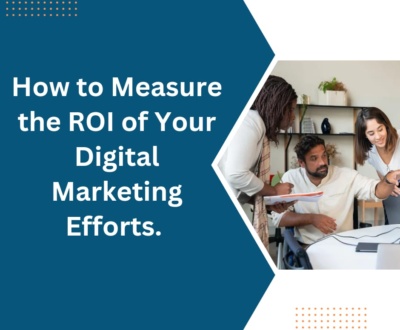Beginner’s Guide to Influencer Marketing in the Digital Age
- October 6, 2024
- Uncategorized
-: Beginner’s Guide to Influencer Marketing in the Digital Age –
Hello everyone. you know that In today’s digital landscape, influencer marketing has become one of the most powerful tools for brands looking to reach new audiences and build trust. By partnering with influencers—people who have a dedicated and engaged following on social media—businesses can tap into the power of word-of-mouth marketing at scale. For beginners, navigating the world of influencer marketing might seem overwhelming, but with the right approach, it can deliver tremendous results. Here’s your guide to getting started with influencer marketing in the digital age.

- Understand What Influencer Marketing Is –
Influencer marketing is a strategy where brands collaborate with individuals who have significant online influence to promote products or services. These influencers can range from celebrities with millions of followers to niche micro-influencers with smaller, highly engaged communities. The core idea is that influencers already have the trust of their followers, making their endorsements more authentic and effective than traditional advertising.
- Identify Your Goals –
Before diving into influencer marketing, it’s important to clearly define your goals. Are you looking to increase brand awareness? Drive traffic to your website? Boost sales of a particular product? Understanding your objectives will help you choose the right influencers and track the effectiveness of your campaigns.
Some common goals for influencer marketing include:
1- Brand Awareness* Introducing your brand to a wider audience.
2- Engagement* Generating likes, comments, and shares to build online interaction.
3- Conversions* Driving direct sales or sign-ups through influencer recommendations.
- Know Your Audience –
Knowing your target audience is crucial in influencer marketing. The influencers you choose should align with the demographic and psychographic profile of your ideal customer. For example, if you’re a beauty brand targeting millennials, you’ll want to work with beauty influencers who create content that resonates with that age group. Understanding your audience ensures that your influencer partnerships are relevant and impactful.
- Choose the Right Influencers –
There are different types of influencers based on the size of their following:
– Mega-influencers* (over 1 million followers): These are usually celebrities or internet personalities with massive reach. While they can get your brand in front of a large audience, they come with high costs and may not always deliver the most engaged followers.
– Macro-influencers (100,000 to 1 million followers): They have large followings but are more approachable than mega-influencers. They often specialize in specific niches, making them a good option for targeted campaigns.
– Micro-influencers (10,000 to 100,000 followers): Though they have smaller audiences, micro-influencers often have highly engaged and loyal followers. They are particularly effective for brands seeking authenticity and deeper connections with niche markets.
When selecting an influencer, consider their engagement rate, content quality, and audience demographics. High follower counts don’t always mean high engagement, so it’s essential to find influencers who genuinely resonate with their followers.
- Develop a Clear Collaboration Strategy –
Once you’ve identified influencers, it’s time to develop a collaboration strategy. Be clear about what you want the influencer to do—whether it’s an Instagram post, a YouTube video, or a TikTok challenge. Give them creative freedom, as they know their audience best, but ensure the content aligns with your brand’s messaging and goals. For beginners, it’s a good idea to start with smaller campaigns or test influencer partnerships before committing to larger, long-term collaborations.
- Track and Measure Performance –
To understand the impact of your influencer marketing efforts, it’s important to track the results. Use unique discount codes, affiliate links, or UTM parameters to monitor traffic and conversions directly related to the campaign. Measure metrics such as ‘engagement rate, ‘reach, and ‘ROI, (return on investment) to assess the campaign’s success. Tracking these metrics helps you refine your strategy and make data-driven decisions for future influencer partnerships.
- Stay Authentic and Build Relationships –
The key to successful influencer marketing is authenticity. Influencer partnerships that feel forced or overly promotional can turn audiences off. Instead, focus on building genuine relationships with influencers whose values align with your brand. This authenticity not only resonates with audiences but also leads to more effective, long-lasting collaborations.
Conclusion –
Beginner’s Guide to Influencer Marketing in the Digital Age marketing has transformed the way brands connect with consumers in the digital age. By partnering with influencers who align with your brand’s goals and values, you can build trust, reach new audiences, and drive meaningful engagement. For beginners, starting small and measuring results is key to learning what works. As you gain experience, you can refine your approach and unlock the full potential of influencer marketing.
About us and this blog
We are a digital marketing company with a focus on helping our customers achieve great results across several key areas.
Request a free quote
We offer professional SEO services that help websites increase their organic search score drastically in order to compete for the highest rankings even when it comes to highly competitive keywords.
Subscribe to our newsletter!
More from our blog
See all postsRecent Posts
- Beginner’s Guide to Influencer Marketing in the Digital Age October 6, 2024
- How to Measure the ROI of Your Digital Marketing Efforts October 6, 2024
- The Power of Content Marketing: How to Create Valuable Content for Your Audience October 6, 2024









